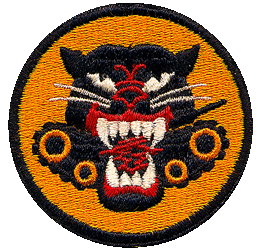 Frederick G. Easley
Frederick G. Easley
Biography: Frederick G. Easley was born on Oct. 24, 1918 in the state of Mississippi. His father, Dee Oldham Easley was married to Roxie P. Collums and the family lived in Houlka, MS. Frederick attended Bruce High School and later worked for the Civilian Conservation Corps prior to entering the service.
Service Time: The following is the story of Sergeant Easley as provided by his nephew, Andy Graves.
My uncle was raised in the state of Mississippi and came from a poor farming family who struggled to survive during the Great Depression of the era. He entered the service before the war began and was assigned to the 654th Tank Destroyer Battalion where he served as a Tank Commander. The unit spent time at both Fort Benning and Camp Gordon prior to going overseas. This unit was later attached to the 134th Infantry Regiment, which was part of the 35th Division of the 3rd Army. The battalion entered France at Omaha Beach on July 12, 1944. They then moved on to St. Lo where fighting was intense and the Regiment encountered many casualties. Sergeant Easley received the Bronze Star for his service at St. Lo. The citation reads as follows:
“For meritorious service during military operations against an armed enemy of the United States on 14 July 1944, near St. Lo, Normandy, France. Sergeant Easley’s platoon supported an infantry company in attack. After having fired upon an enemy strong-point, one of the tank destroyers was being moved to a supplementary firing position when it slipped into a ditch, throwing a track. The crews of two destroyers combined to extricate the destroyer from the ditch and replace the track. Replacing the track was an extremely difficult operation because of the lack of tools, necessitating the resort to the field expedient of using a towing cable, with power from a second destroyer, to make the repair. The task required an hour and twenty minutes, during which time Sergeant Easley and the other members of the two crews worked under heavy enemy fire. The endeavors of Sergeant Easley, who worked coolly and without regard for his personal safety for a long period of time ,resulted in the saving of the tank destroyer from destruction by the enemy and its return to service, and contributed materially to the success of the military operation. Signed: Paul W. Baade, Major General,USA, Commanding”
The battalion moved across France through Torigni Sur Vire, Amebacq, Louvigue, Le Mans, Chateau De Dierville, Montargis, Joigny, Toul, and many other towns. On September 15, 1944, they liberated the town of Nancy, France, where the photograph (see below) was taken. Sergeant Easley received the Oak Leaf Cluster for his service after the liberation of Nancy. The citation reads:
“For heroic service in connection with military operations against an enemy of the United States at Pulnoy, Selchamps, Pain de Sucre and Agincourt, France, 18 to 20 September 1944. In the operations that resulted in the capture of these towns, Sergeant Easley, serving as gun commander of a tank destroyer, employed his vehicle as an assault gun when reconnaissance proved impracticable. On many occasions, he voluntarily exposed himself to enemy artillery, mortar and small arms fire in order to select routes for his tank destroyer and more effectively to direct its fire. Sergeant Easley’s intrepid leadership materially facilitated the success of the battalion mission during this period. Signed: Paul W. Baade, Major General, USA, Commanding.”
My uncle was killed in action on October 10, 1944 which was about three weeks after the photo of him entering Nancy was taken. According to reports, a German tank waiting in ambush scored a direct hit on his tank killing most on board. As my uncle climbed over the turret to escape the burning tank, he was gunned down by a German soldier with a burp-gun. The German soldier and the German tank were subsequently killed and destroyed by other tanks of the 654th Tank Destroyer Battalion. On his last leave at home before entering battle, my uncle told his brother that he knew where he was going, he knew the job that needed to be done, and he did not believe he would return home. The mission was simply too dangerous to survive. He told his family if he was killed in battle, he wanted to be buried with his men. Sergeant Easley is buried in the Lorraine American Cemetery, St. Avold, France, Plot C, Row 8, Grave 30, alongside his fellow soldiers.
In April 2001, while researching the history of the 654th Tank Destroyer Battalion. Andy contacted Captain Ruggles Baker, who formerly served in the 654th. He sent Andy a photograph of a tank rolling through the streets of Nancy, France, taken Sept. 15, 1944, the day of liberation for that city. There in this 57-year-old photograph was his uncle, Frederick G. Easley, standing in a tank with his hand above a .50 caliber machine gun. This same photo appeared in the March, 1945, issue of National Geographic Magazine, in an article about the liberation of Nancy entitled “A City Learns to Smile Again”. The family had never seen this photo before.

